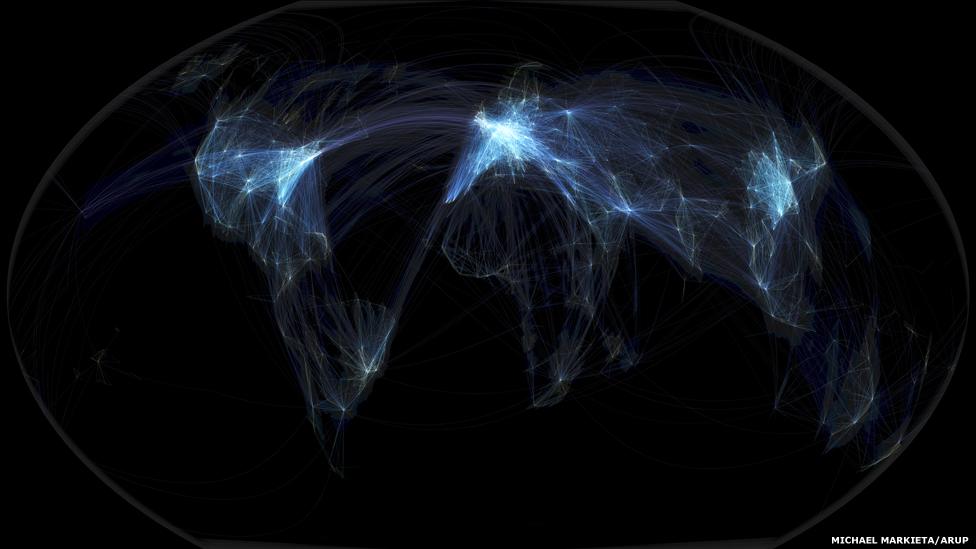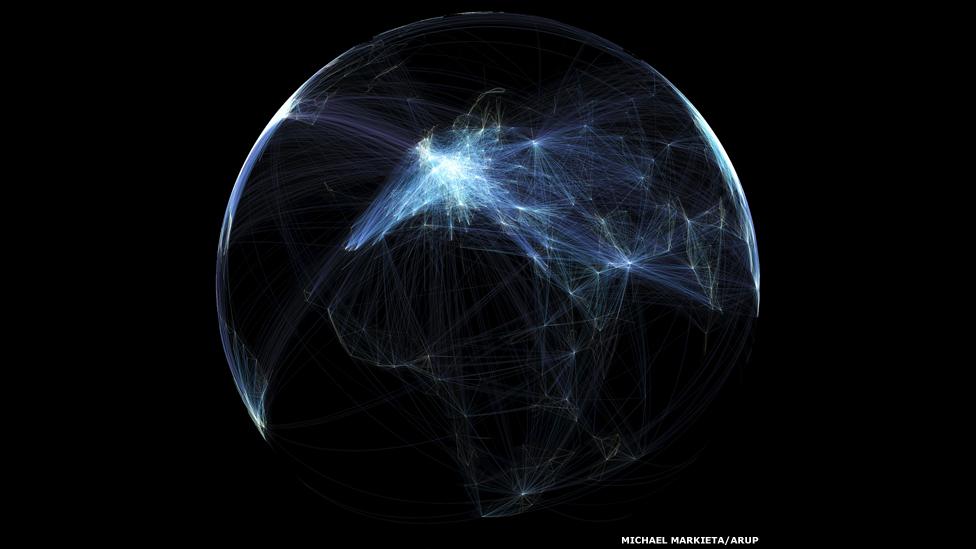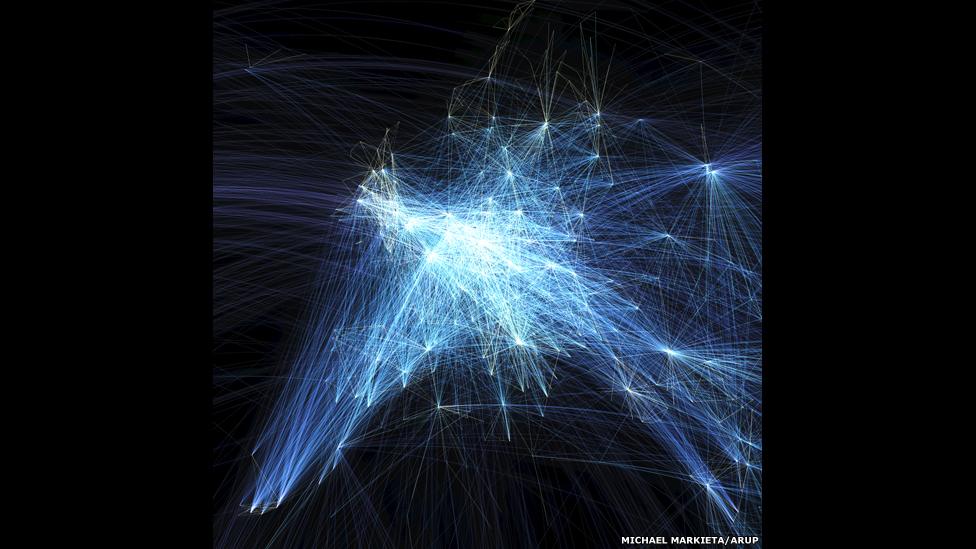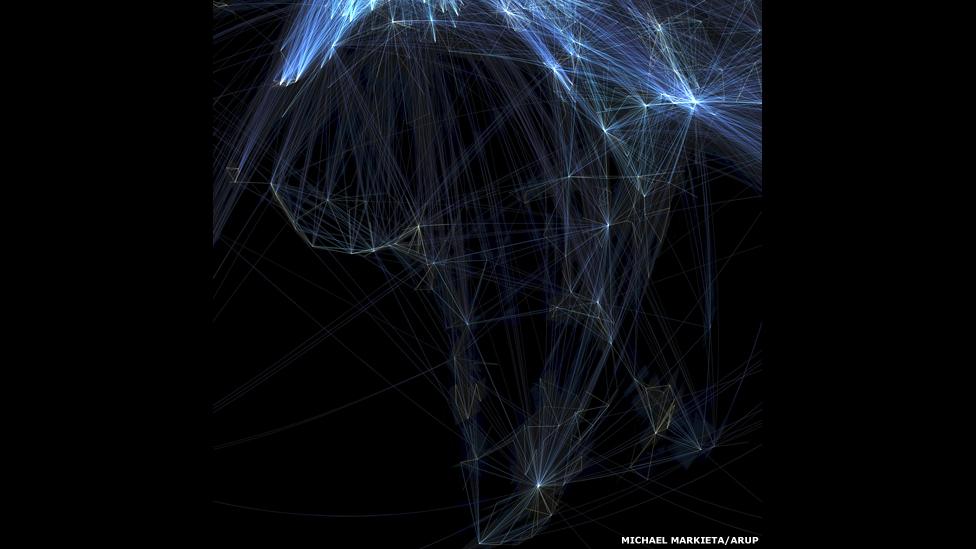In pictures: Global flight paths
- Published

Michael Markieta, a transportation planner at global engineering and design firm Arup, has spent the past year developing visualisations of flight paths crossing the globe.

Markieta began to work on the visualisations in his spare time using geographical information systems (GIS) technology to create "maps" of the data.

There are currently more than 58,000 flight paths criss-crossing the globe, but each individual airport services only a limited number of others.

The busiest European airport is Frankfurt International, which has 235 direct flight destinations. (Based on data from openflights.org)

The busiest airports by continent include Sao Paulo, Beijing, Sydney, Frankfurt, Cairo and Atlanta.

Displaying 58,000 flight paths becomes difficult when multiple paths overlap, particularly in dense areas such as central Europe and the eastern United States.

Markieta used lighter shades of blue to denote shorter and overlapping flights and darker shades for longer flights with little or no overlap.

Not surprisingly, bright hotspots appear in areas where many flight paths coincide with the world’s major cities.

Markieta found that there was no need to apply a base layer to the images to help viewers identify different parts of the world. The flight paths themselves trace the outlines of all major continents, demonstrating one of the typical patterns of human settlement: living in coastal regions. All images: Michael Markieta, GIS Consultant, Arup. Data from openflights.org
- Published29 May 2013